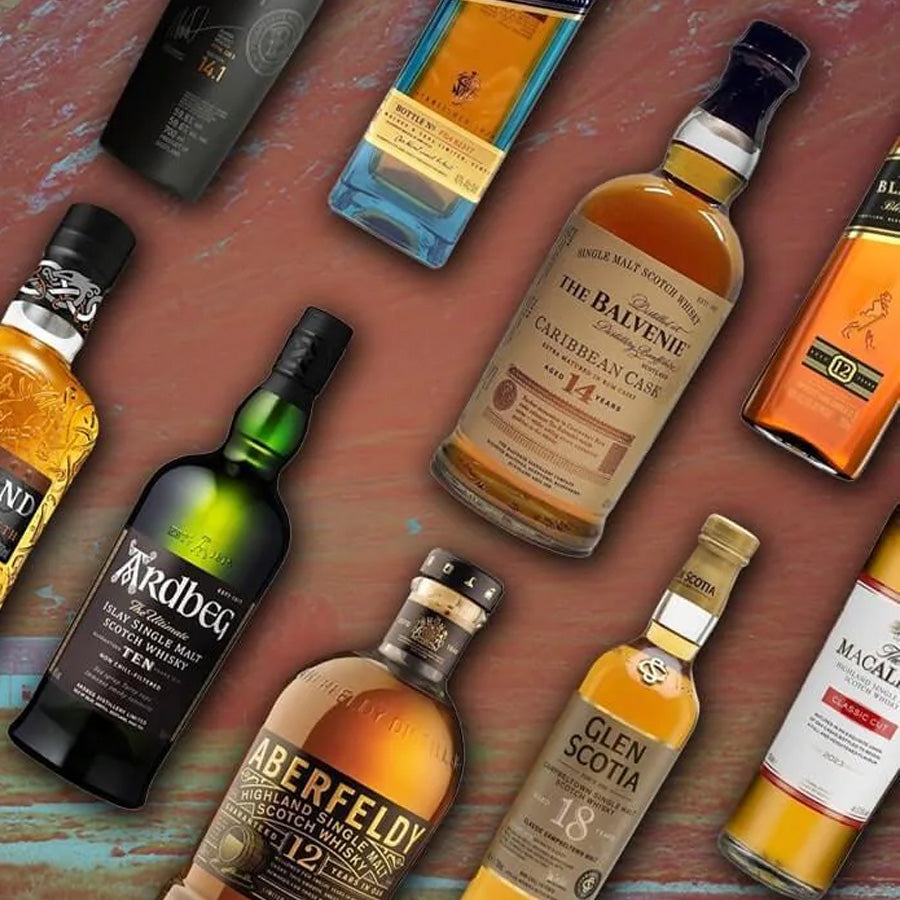What Is Smoked Whiskey?
Smoked whiskey is a bold and flavorful spirit that stands apart from traditional whiskies thanks to its distinctive smoky aroma and taste. But what is smoked whiskey exactly?
At its core, smoked whiskey is made by introducing smoke at some point during the production process—typically by drying malted barley over a fire fueled by peat, wood, or other aromatic materials. This technique infuses the grain with smoky compounds that carry through fermentation, distillation, and aging, resulting in a richly layered final product.
There are two primary styles:
- Peated whiskey, most commonly associated with Scotch, uses peat fires to dry malted barley.
- Wood-smoked whiskey, more often found in American craft distilleries, involves smoke from hardwoods like cherry, mesquite, or hickory.
Common Misconceptions:
Smoked whiskey is often mistaken as overly harsh or only suited for seasoned drinkers. In reality, it comes in a range of intensities—from subtle campfire whispers to full-bodied peat monsters—making it accessible to a broad spectrum of palates.
How Smoked Whiskey Is Made
The journey of smoked whiskey begins in the malting process, where the grain’s exposure to smoke sets the foundation for its flavor.
Key Smoking Methods:
- Peat Smoke: Traditionally used in regions like Islay, Scotland. Peat, a dense accumulation of decomposed plant matter, burns slowly and imparts earthy, medicinal, and briny notes.
- Wood Smoke: American distillers may opt for smoking malted grain with woods like applewood or oak, yielding sweeter, more aromatic tones.
- Barrel Smoking: Some distillers char or smoke barrels before aging whiskey, subtly layering smoke into the aging process.
Influence of Region:
Regional practices play a significant role. For example:
- Islay scotch is famed for bold peat smoke.
- Texas and Pacific Northwest distilleries experiment with mesquite and cherrywood.
The Role of Casks:
Casks can either mute or amplify the smokiness. Ex-sherry or port casks often balance strong smoke with sweetness, while new oak casks might elevate spicy undertones.
Flavor Profile of Smoked Whiskey
The taste of smoked whiskey can be an adventure in itself. Here’s what to expect:
Common Notes:
- Smoke
- Charcoal
- Leather
- Spice (black pepper, clove)
- Earth (wet moss, iodine)
Lightly vs. Heavily Smoked:
- Light Smoke: Often subtle, with just a touch of campfire or toasted grain.
- Heavy Smoke: Bold, bracing, and peaty, often with maritime or medicinal edges.
Comparisons:
- Compared to Scotch whisky, smoked bourbons are often sweeter and more robust.
- In contrast with other smoky spirits like mezcal, smoked whiskey tends to be rounder and richer due to barrel aging.
Best Smoked Whiskeys to Try
Ready to explore? Here are some of the best smoked whiskeys to sip and savor:
Peated Whiskeys (Classic & Bold)
-
Laphroaig 10 Year Old
Notes: Seaweed, iodine, intense peat
Best For: Peat lovers -
Ardbeg Uigeadail
Notes: Smoke, sherry sweetness, espresso
Best For: Complex palates -
Lagavulin 16
Notes: Peat smoke, dried fruit, leather
Best For: Slow sipping
Wood-Smoked American Whiskeys
-
Corsair Triple Smoke
Notes: Cherrywood, peat, beechwood, malt
Best For: Craft whiskey explorers -
Balcones Brimstone
Notes: Texas scrub oak smoke, caramel, roasted corn
Best For: Adventurous drinkers -
Del Bac Dorado
Notes: Mesquite smoke, vanilla, citrus
Best For: Southwest-inspired flavors
Beginner-Friendly Options
-
High West Campfire
Notes: Smoke meets rye spice
Accessible with a balanced profile - Benromach 10
Notes: Soft peat, apple, vanilla
Subtle and well-rounded
How to Enjoy Smoked Whiskey
Smoked whiskey is all about savoring the experience. Here’s how to do it right:
Serving Suggestions:
- Neat: Best for appreciating complexity and mouthfeel.
- With Water: A few drops can open up floral and smoky layers.
- In Cocktails: Try in an Old Fashioned, Manhattan, or even a smoky Boulevardier.
Food Pairings:
- Smoked meats (brisket, bacon)
- Dark chocolate or salted caramel
- Sharp cheeses (blue cheese, aged cheddar)
Glassware & Temperature:
- Use a Glencairn glass or tulip-shaped glass to funnel aromas.
- Room temperature is ideal, but try it slightly chilled if the smoke is overpowering.
Conclusion: Embrace the Smoke
Smoked whiskey isn’t just for aficionados—it’s for anyone ready to explore a deeper dimension of flavor. Whether you start with a lightly smoked dram or dive into a peaty powerhouse, there’s a smoky whiskey out there waiting to surprise you.
Ready to experience the bold?
Try one of our recommended bottles today and elevate your whiskey journey.








